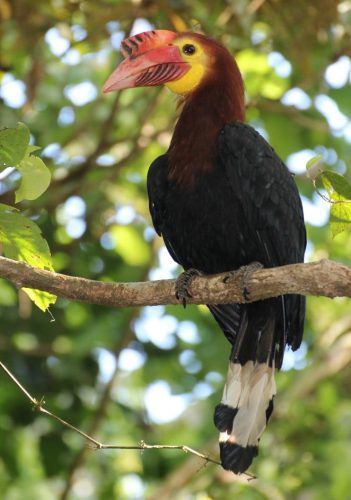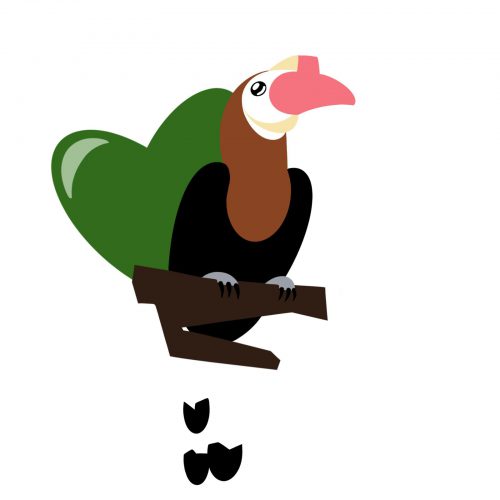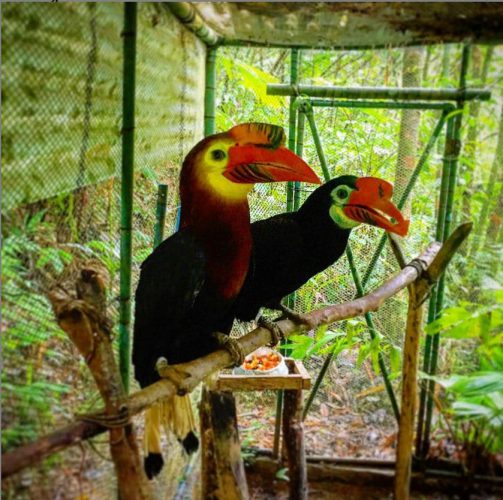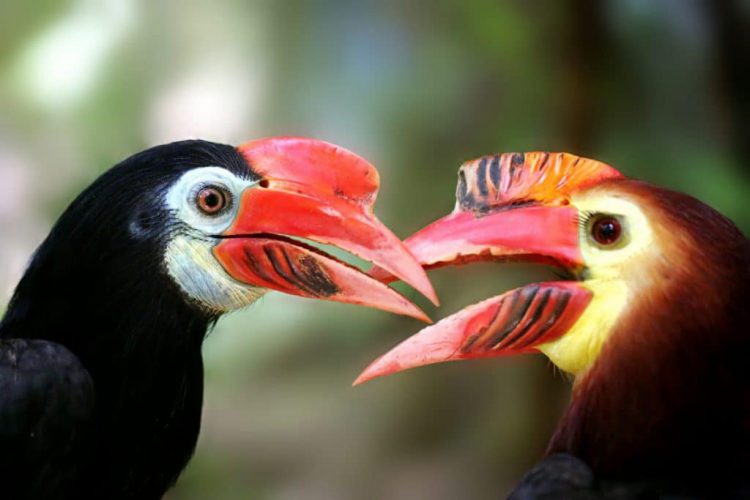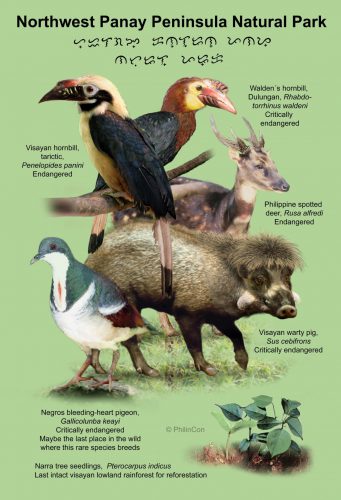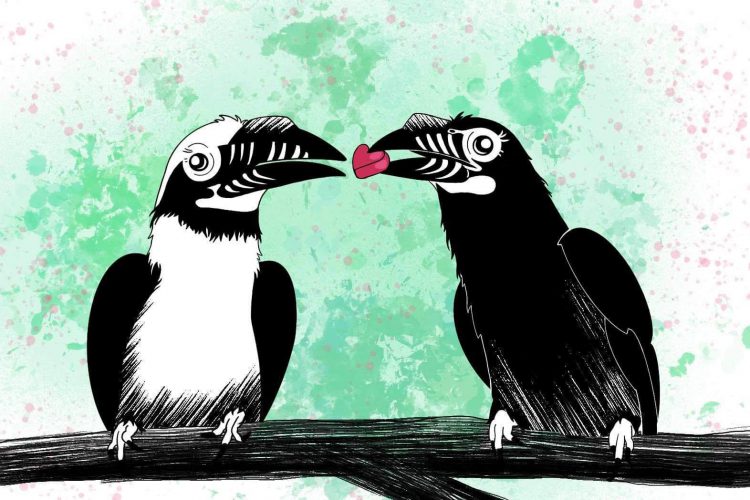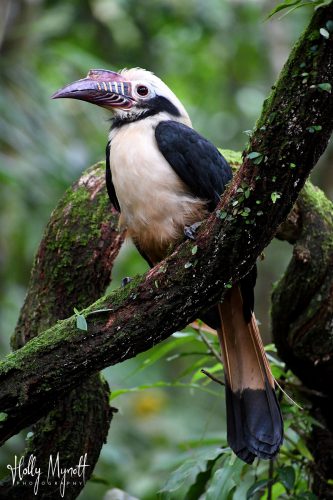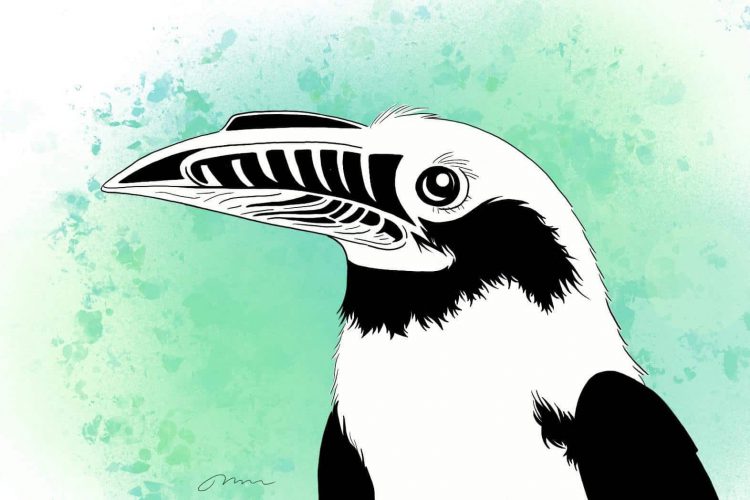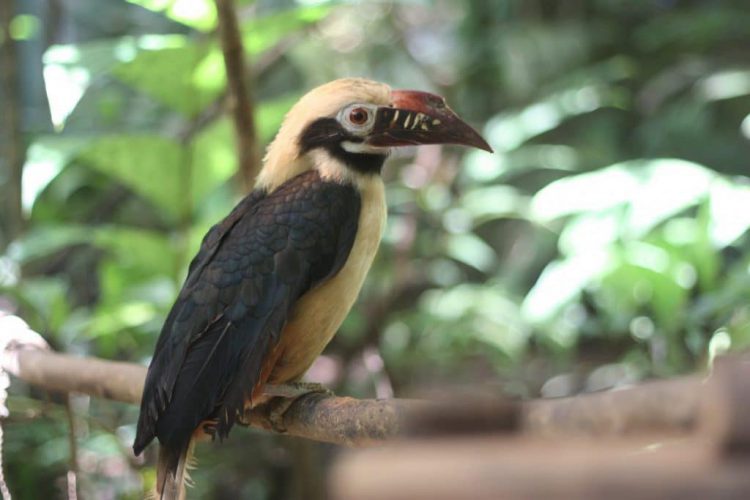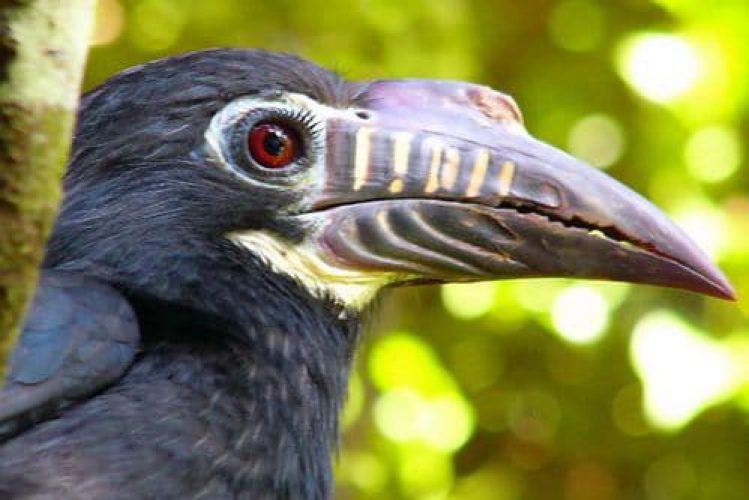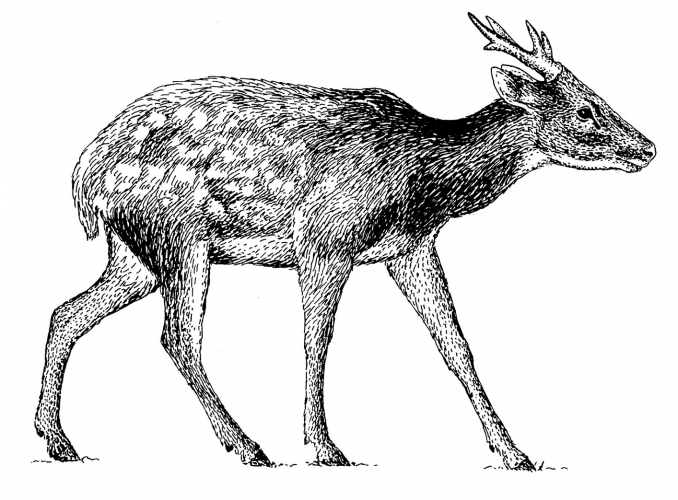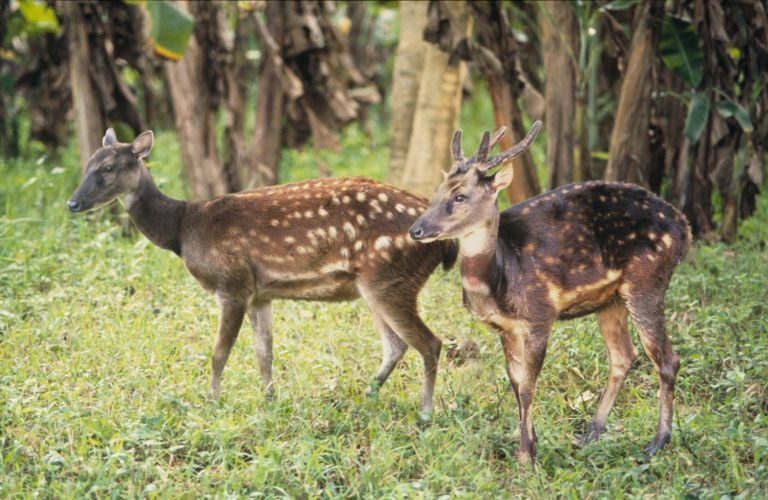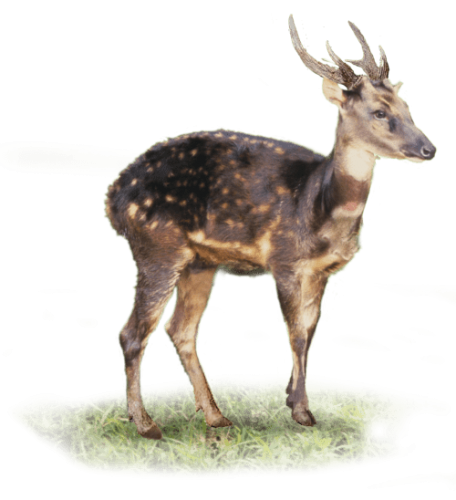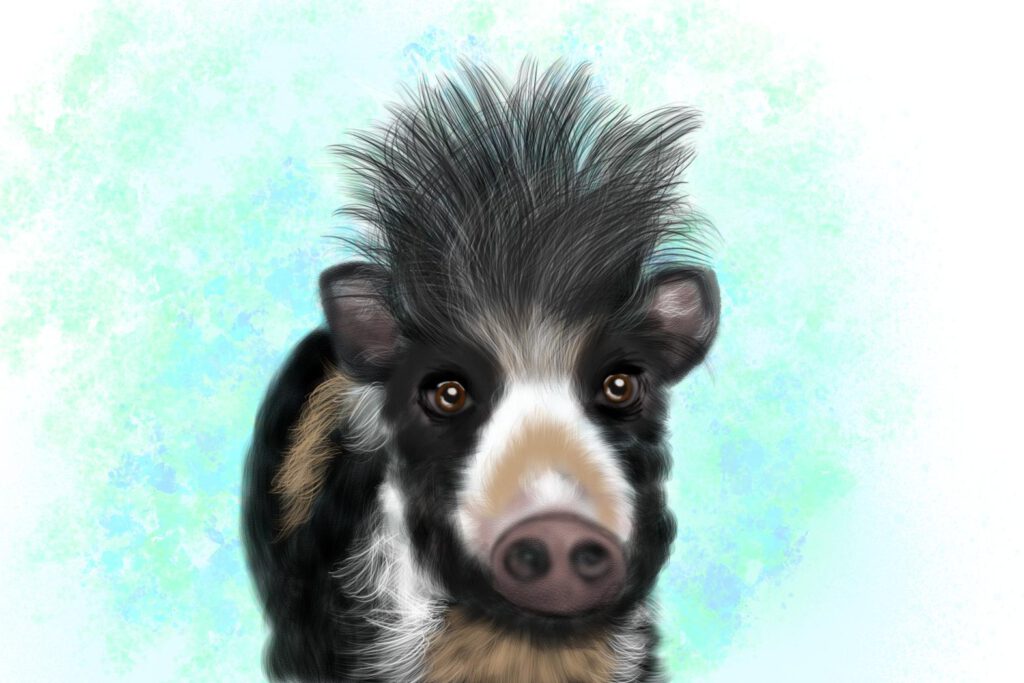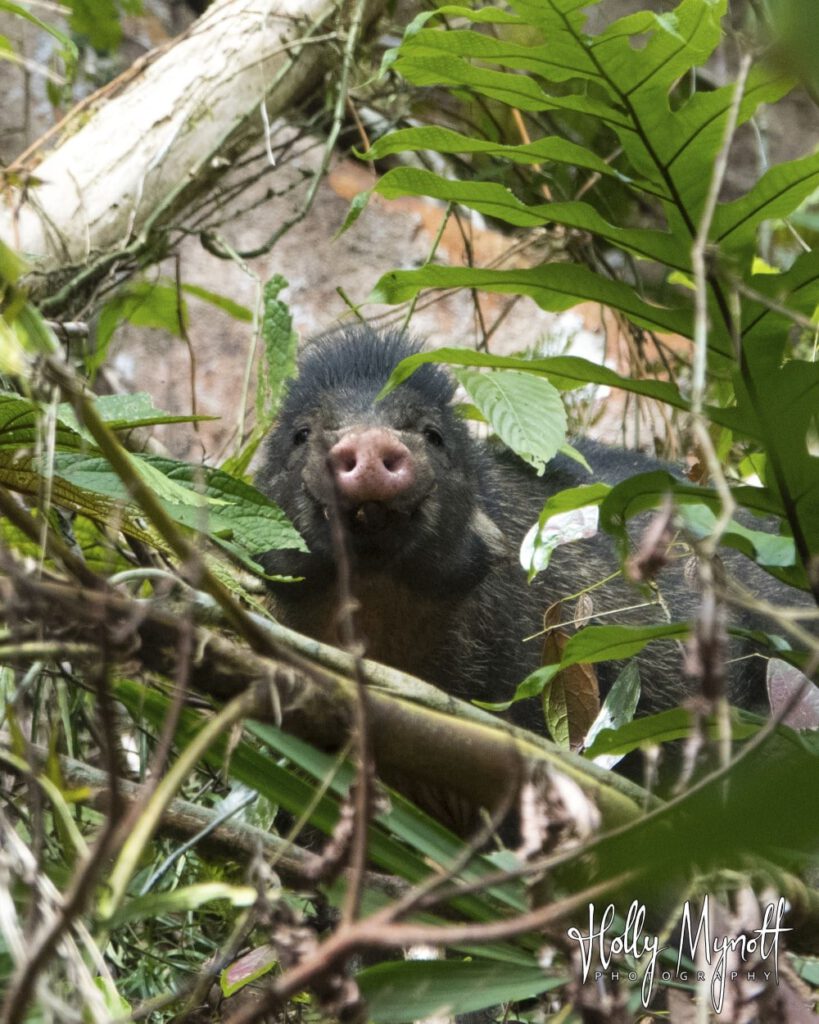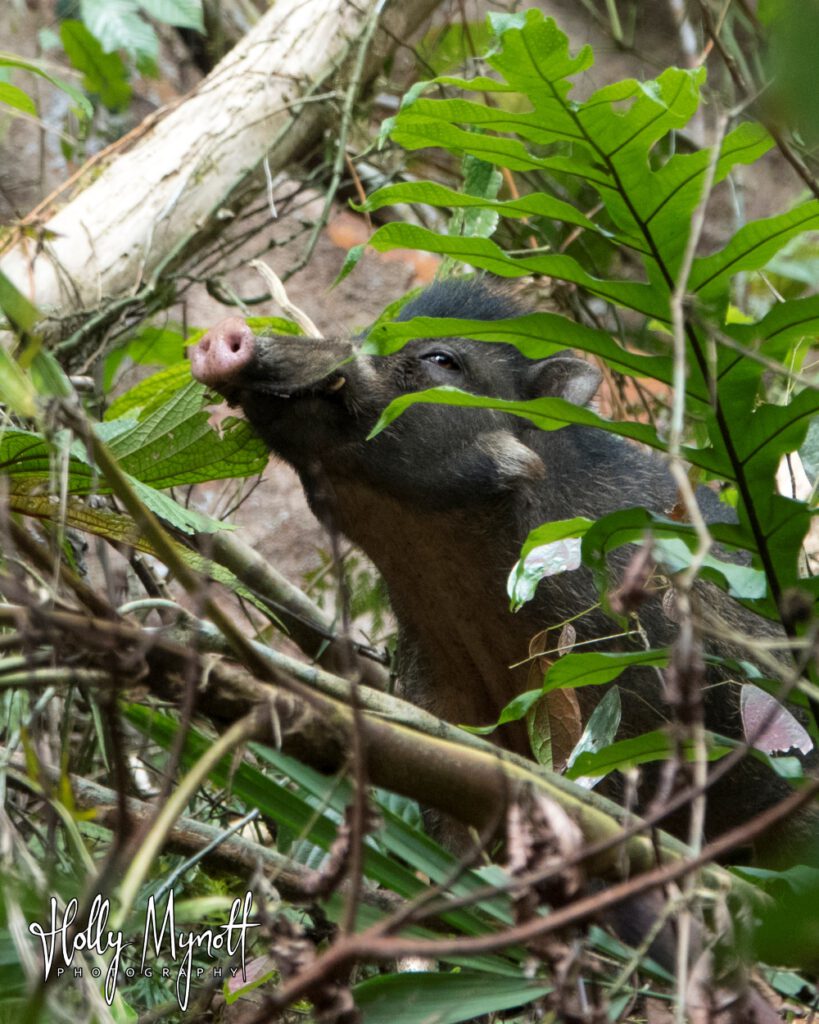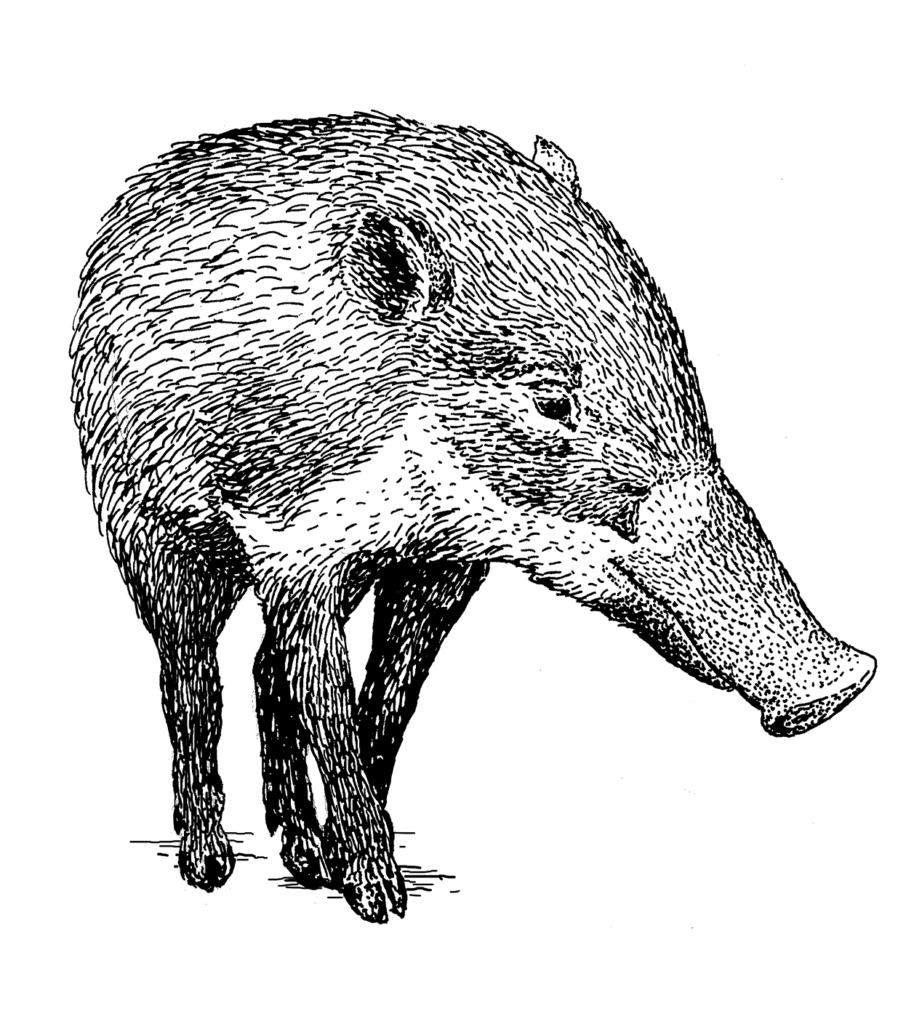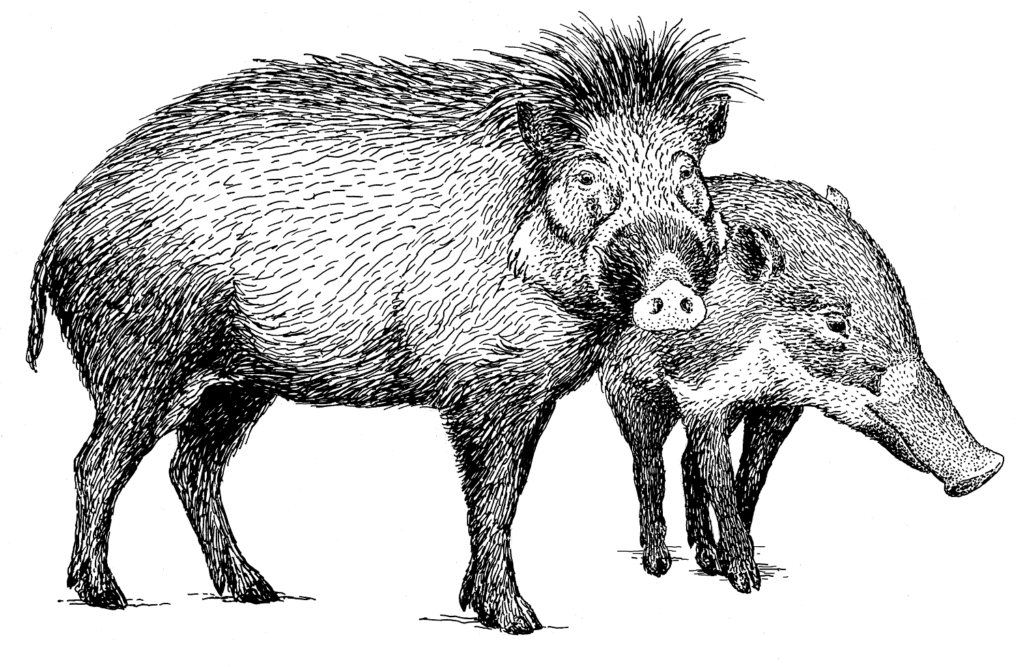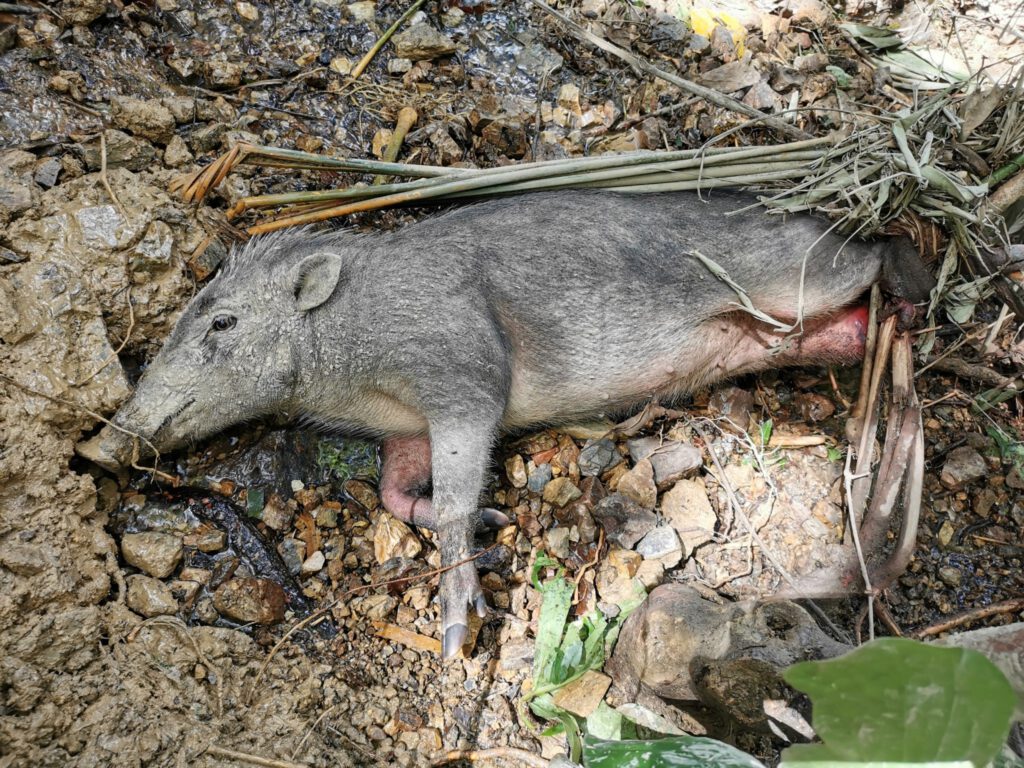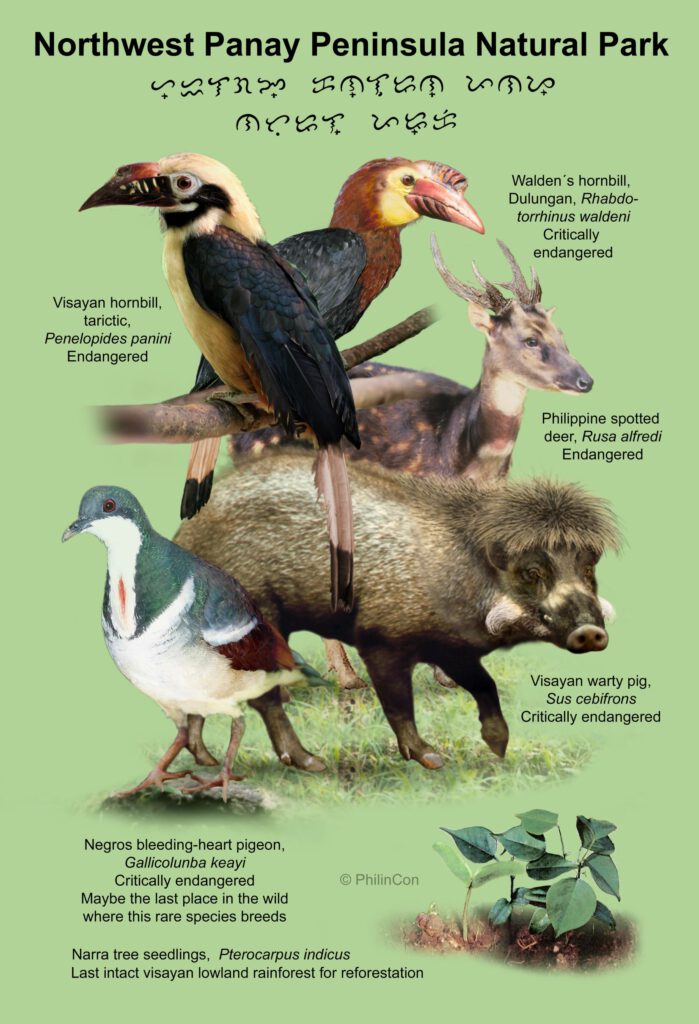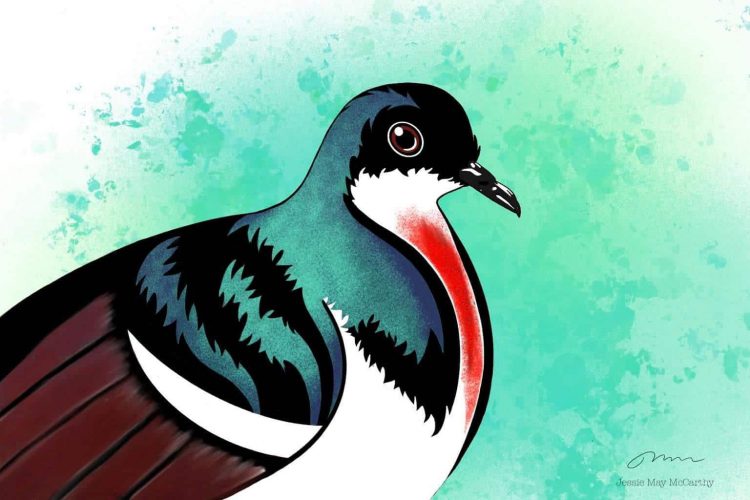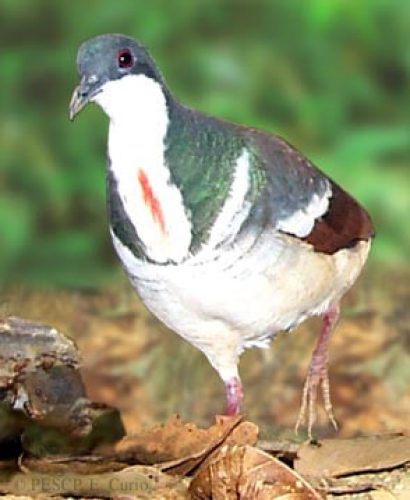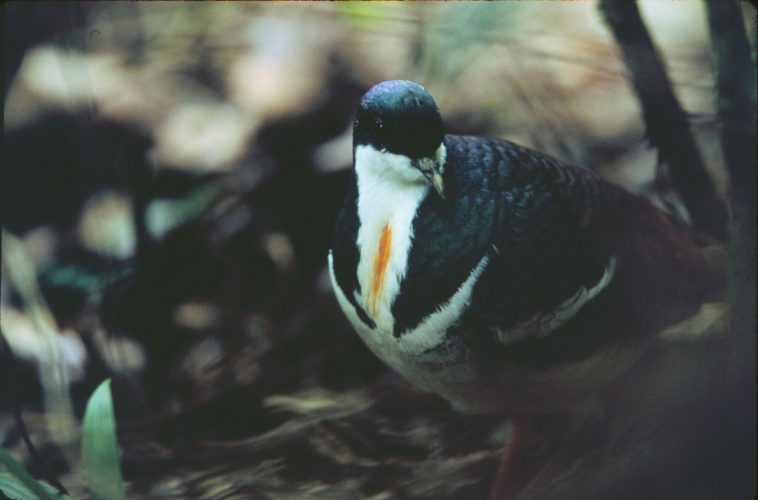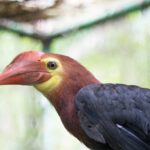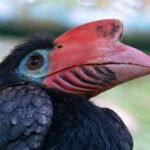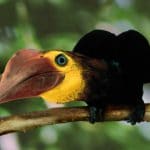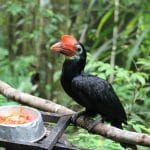Threatened Treasures
& the big 5
Threatened Treasures
| The big visayan five |
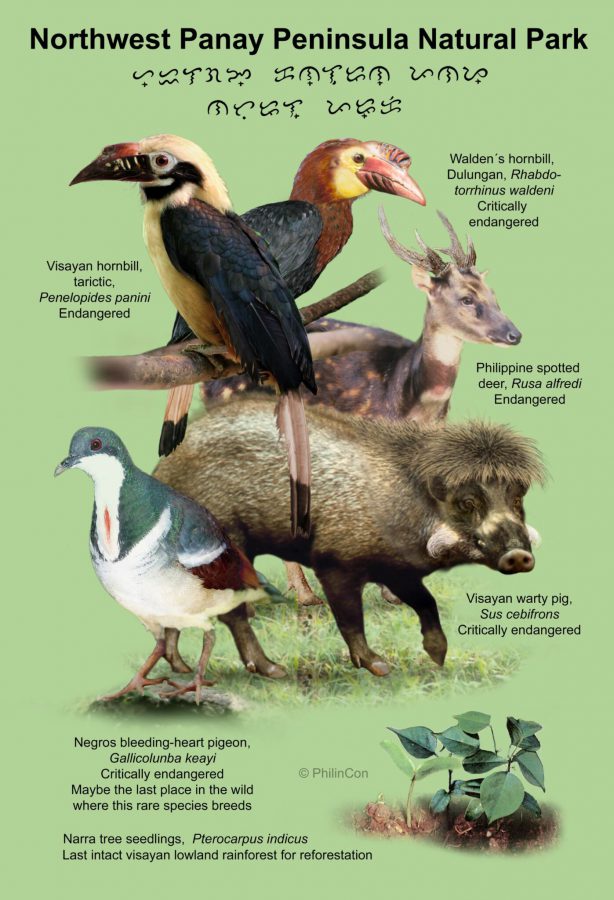
They are rare, unique & endangered – To see the big visayan five, people are travelling the whole world
The Big 5 are our five rarest, most unique, and endangered species. Also known as the Visayan five, people travel across the world to observe this group and they are the highlight of our conservation effort. But these are not the only species we look after, by protecting our rainforests and stopping the rampant damage of illegal poaching we support a wide variety of animals.
Amazing High Biodiversity
Our habitat has a large range of highly endangered, partly endemic species of frogs, reptiles, birds, mammals, and invertebrates. It is one of the hotspots with the highest conservation priorities in the world, both in terms of the number of endangered flora and fauna per unit area, and the degree of threat these species confront. Philippine biodiversity per unit area is globally unsurpassed. This richness has been shaped for the most part by the complex paleogeographic history of the archipelago. The last significant stands of primary, low elevation rainforest in the biogeographic region of the Western Visayas, located on the northwestern peninsula of Panay, are in outstanding shape, providing great habitats for wildlife.
endangered Visayan Tarictic Hornbill, Penelopides panini
| So, who are the big 5? |
| Waldens Hornbill |
Walden´s Hornbill or Visayan writhed-billed Hornbill or rufous-headed Hornbill Local names: Dulungan, Kalaw or Talarak. Rhabdotorrhinus waldeni (old names: Aceros leucocephalus waldeni, Aceros waldeni)
Our first big species is the Walden’s Hornbill, an endangered tropical bird found in the forest on the island of Panay and some remaining in Negros. Mating for life in the cavity of trees, this species is loyal to its partner with the male delivering food to the mother and their hatchlings.
To find out more go to our Hornbills page.
Hornbills are a charismatic group of tropical birds characterized by their long decurved bills, sometimes with a casque on the upper mandible. Their body is covered in black feathers with a section of white tail feathers. Towards the beak is a redish nape following a yellow throat and face region.
Most of this species live in the remnants of the forest on the island of Panay, with some groups remaining in Negros. These herbivores mainly eat fruit, being a major part in the seed dispersion of their home forests. This aids in the scattering of seeds for increased forestry as well as the knocking of fruits providing food for other species.
The Walden’s Hornbill build a home together in couples in the cavity of trees where the mother lays her eggs and raises the chicks, closing the cavity to only allow the male to deliver food for their family while providing protection from predators. This creates a bond for life in which the two birds will forever breed together and return to their same nest to raise their children. The mother and hatchlings can stay in the tree for up to 105 days until the chicks are ready to fly, the mother never leaving their side.
Nowadays, the Visayan Tarictic Hornbill and the Walden’s Hornbill are both considered critically endangered species. Several factors have contributed to this development: First, deforestation and illegal logging has led to a rapid decrease of their population, as hornbills mostly nest in natural cavities in trees. Furthermore, the poaching of nests for the pet marked has played a role in these species becoming critically endangered. Because of their slow reproduction, it is hard for them to recover their population under these circumstances.
PhilinCon aims to protect these and other threatened species, for instance through nest guarding, installation of nest boxes, and rehabilitation of injured animals. Thanks to our work, the number of hornbills on Panay has increased significantly in the recent years. Still, these rare and vulnerable species require our attention and protection, to save these iconic and unique Visayan birds from extinction.
Found hornbills are treated by veterinarian Dr. Sanchez in our rescue facility. Young birds are reared there until they are fully grown. After rehabilitation and a final health check, the birds are released back into the wild. Surveillance of nests of the large by paid work through locals has proven to be extremely successful. The losses from poaching (brood and sometimes also females killed) dropped from previously 50% to 5% since 2001.
Due to recent unjustified criticism, we would like to point out that the goal of any conservation measure is the survival of the species, particularly when they are considered critically endangered. Nevertheless, the nest guarding program provides an environmentally sustainable income for local people and has increased the number of breeding pairs.
| Philippine Spotted Deer |
engangered Philippine Spotted Deer, Rusa alfredi
Found on Panay and Negros, the Philippine Spotted Deer is the largest of the three endemic deer species found in the Philippines. The large decrease in their population has been put down to hunting, logging activities and agricultural conversion, because of this the species is only found in more remote areas of the islands.
see wikipedia for more
| Visayan Hornbill |
Endangered Tarictic Hornbill, Penelopides panini, also called Visayan Hornbill.
The Visayan Hornbill is the most recent critically endangered species of hornbill. They are known for travelling long distances to find their favourite fruit bearing trees, and breed for life like the Walden’s Hornbill.
The Philippines has 11 endemic hornbill species and so far, 9 are threated, with the Visayan hornbill the latest species to be identified as critically endangered. The Visayan hornbill, along with its other subspecies to which it is closely related, are fondly referred to as the “farmers of the forest” for their integral role in dispersing seeds throughout the area in which they live and are especially known for travelling long distances to find their favourite fruit bearing trees. Named after the area it lives, the Visayas, it requires large, mature trees in order to nest. Once a suitable tree is discovered they fill the entrance of the nesting hole with materials such as mud and the female are left to lay and then incubate her eggs. Following this the male returns systematically to feed the female and eventually the young, until they are old enough to fly the nest, when they will break through the opening.
The Visayan Hornbill is just one of the many species that occupies a place on the IUCN red list as an endangered species with its small population undergoing a very rapid decline because of lowland deforestation and hunting. Poaching of nests and the cutting down of trees used for nesting is also among the reasons for this continued decline. Close relations of the Visayan Hornbill, the Visayan Tarictic Hornbill and the Walden’s Hornbill are extinct on several Philippine islands while the Tarictic is also extinct on Ticao, Guimaras and critically endangered on Negros and Masbate. PhilinCons aim is conserve this valuable species by stopping poachers and rehabilitating injured animals. Please visit our donations page to aid us in saving these beautiful and important birds.
| Visayan Warty Pig |
Critically endangered Visayan Warty Pig, Sus cebifrons
The Visayan Warty Pig is a critically endangered species found on six of the Visayan Islands (Cebu, Negros, Panay, Masbate, Guimaras, and Siquijor). The Visayan Warty Pig is critically endangered due to habitat loss and hunting. The pig split into two subspecies the Cebu warty pig and the Negros warty pig, the Cebu believed to be extinct. The biggest threat to the Visayan warty pig is habitat loss caused by commercial logging and slash-and-burn farming.
See wikipedia for more
| Negros Bleeding-heart Pigeon |
Critically endangered Negros Bleeding-Heart, Gallicolumba keayi
Finally the Negros Bleeding-heart Pigeon is a small critically endangered bird, found across the islands of Negros and Panay. The species has a small, fragmented population which makes them vulnerable to hunting and habitat loss. See video of the shy negros bleeding-heart pigeon below

Philippine Parrots: Red-vented cockatoo, hanging parrot, blue-backed parrot
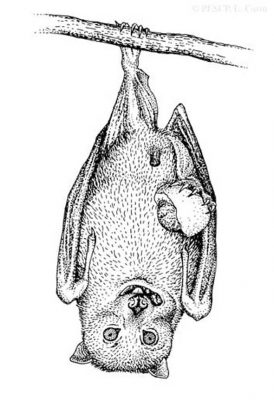
Little golden-mantled flying fox eating fruit of dangkalan tree (Calophyllum inophyllum)

Changeable hawk-eagle, immature of light variant,
A vulnerable, yet widely distributed raptor in South Asia
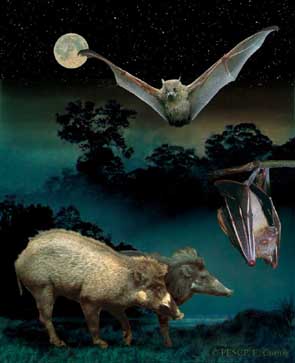
Forest at night: The figure shows fruit bats and a pair of the endangered Visayan warty pig
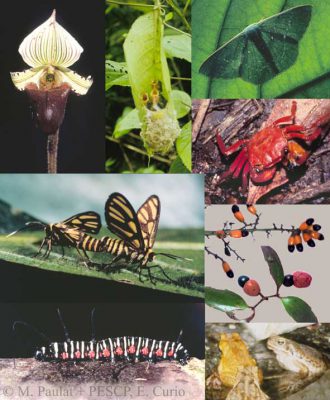
Some examples: the orchid Paphiopedilum hennisianum, a nest with young tailorbirds, syntomiid moths, a Geosesarma land crab, frogs, and fruits of two tree species whose pulp (red) is separated from the drupe with seed (black). The adaptive value of this design is its better detectability by hornbills and other frugivores as now discovered by Hagel & Curio (in prep.).
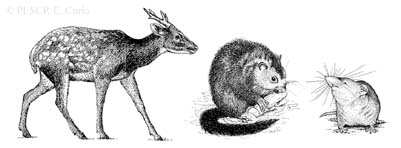
Visayan mammal fauna also includes the Philippine spotted deer (male), the Panay cloud runner or Bushy-tailed cloud rat, and small species like this Upland shrew which has recently been described (Hutterer 2007, see our new species page). Not to scale.
A large, black, frugivorous, arboreal monitor species (Panay Monitor Lizard), discovered on Panay by our coworker N. Paulino and described by M. Gaulke and E. Curio. The diet of this species was studied in NW Panay with the help of field observations, radio telemetry, and the analysis of feces and of stable isotopes in body tissue (dead claw tips). Accordingly, the species is predominately a vegetarian, feeding on the fruits of screw palms and some palm trees, aside from an admixture of leaves. Animal food such as crabs, insects and snails is consumed to a much lesser degree. Thus, the Panay monitor is largely a vegetarian like its closest relative, Gray’s Monitor (Varanus olivaceus) and Bitatawa Monitor (V. bitatawa) on Luzon.
| big panay monitor Lizard |
The BIOPAT Mabitang Project
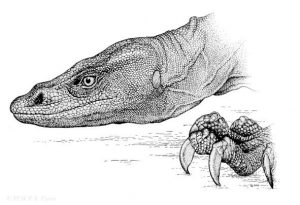
By M. Gaulke, G. Canoy & E. Curio
To learn more about the recently described Mabitang (Panay Monitor Lizard, Varanus mabitang), an endemic and highly endangered large monitor lizard from the forests of Panay, a field study was supported by BIOPAT (Biologische Patenschaften e.V., Eschborn) for a number of years. For at least two years, three different study areas have been regularly searched for this lizard and its tracks. This search was extended to still other areas of the CPMR in the GIZ/DENR driven program toward the proclamation of PAs, as defined by the occurrence of critically endangered species. Then data recorded will lead to a more profound knowledge of its population status and its biology, enabling PhilinCon to implement concrete conservation measures. At the same time, local awareness towards the uniqueness of this remarkable lizard is increased with the help of posters and educational campaigns.
Literature concerning the Mabitang. See also general publication list M. Gaulke.
| Bleeding heart |
Watch the elusive rare bleeding-heart pigeon. (By clicking on this facebook-video only then facebook can use your cookie-information.) If you want to check out mongabay click here.
| Plants |
The Narra Tree - Pterocarpus indicus
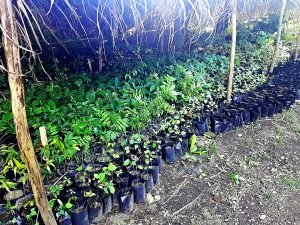
The Narra tree (Pterocarpus indicus) is the national tree of the Philippines and is typically used by carpenters in this region because of its very durable and sturdy nature.
Description of the tree
The Narra is usually found in primary and secondary forests at low and medium altitudes throughout the Philippines although the Narra naturally prefers to grow by the sea. The wood of the tree is a rich red/rose colour, often variegated with yellow, making the wood highly favourable for timber and other ornamental uses. The Narra blooms from February to May, the orange and yellow flowers produced are borne in panicle clusters and produce winged, one-seeded legumes. The roots of the Narra tree are fibrous, extending far and wide below the body of the tree, this structure is hugely important in the holding together of the soil, preventing erosion and stabilizing the soil. The Narra tree is (falsely) believed to be traditional Asian medicine to treat a number of ailments and its flowers are particularly beneficial as a source of nectar and pollen for bees.
Endangered
Nowadays the Philippines has only a small and scattered population of the Narra tree. In the last few years because of its durability as well as its many uses in construction this tree has faced mass deforestation as well as taken the brunt of illegal logging. Today the last of the Narra trees can only be found in Bicol, Panay, Mindanao, the coast of Isabela and the forests of Cagayan. Within PhillinCon we hope to conserve the Philippines national treasure and ensure that future generations of Narra tree are able to thrive.

